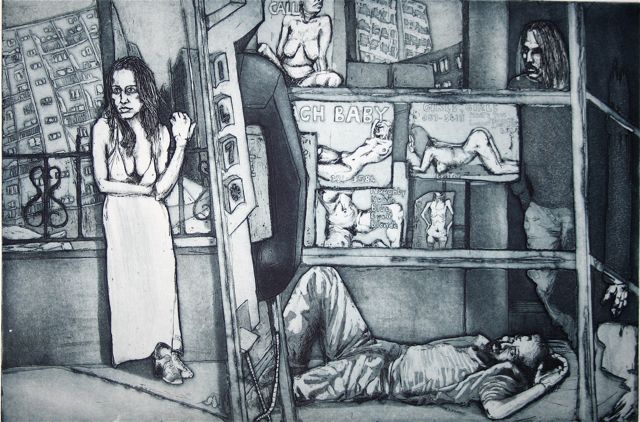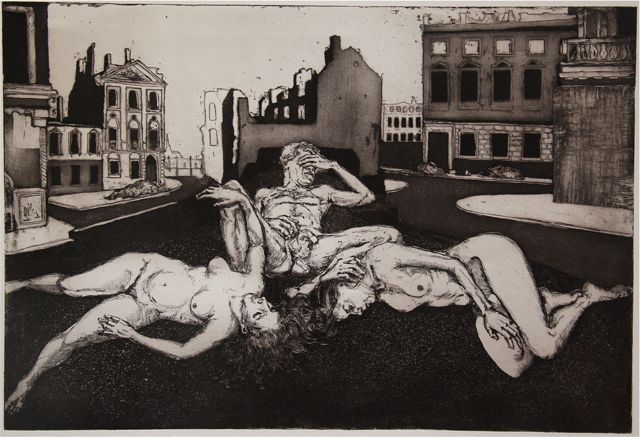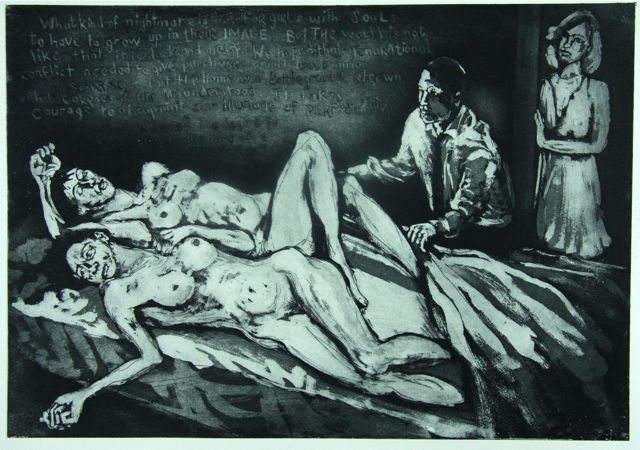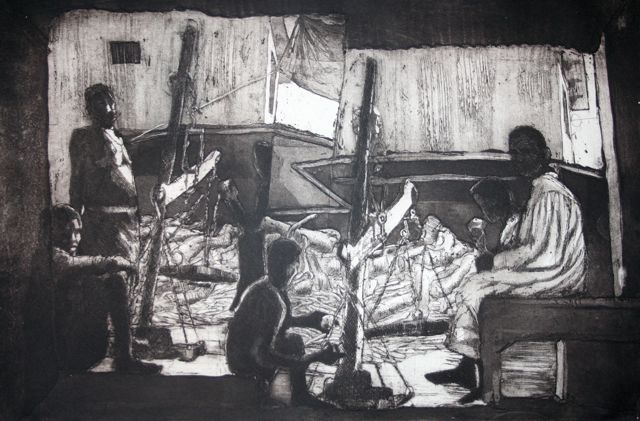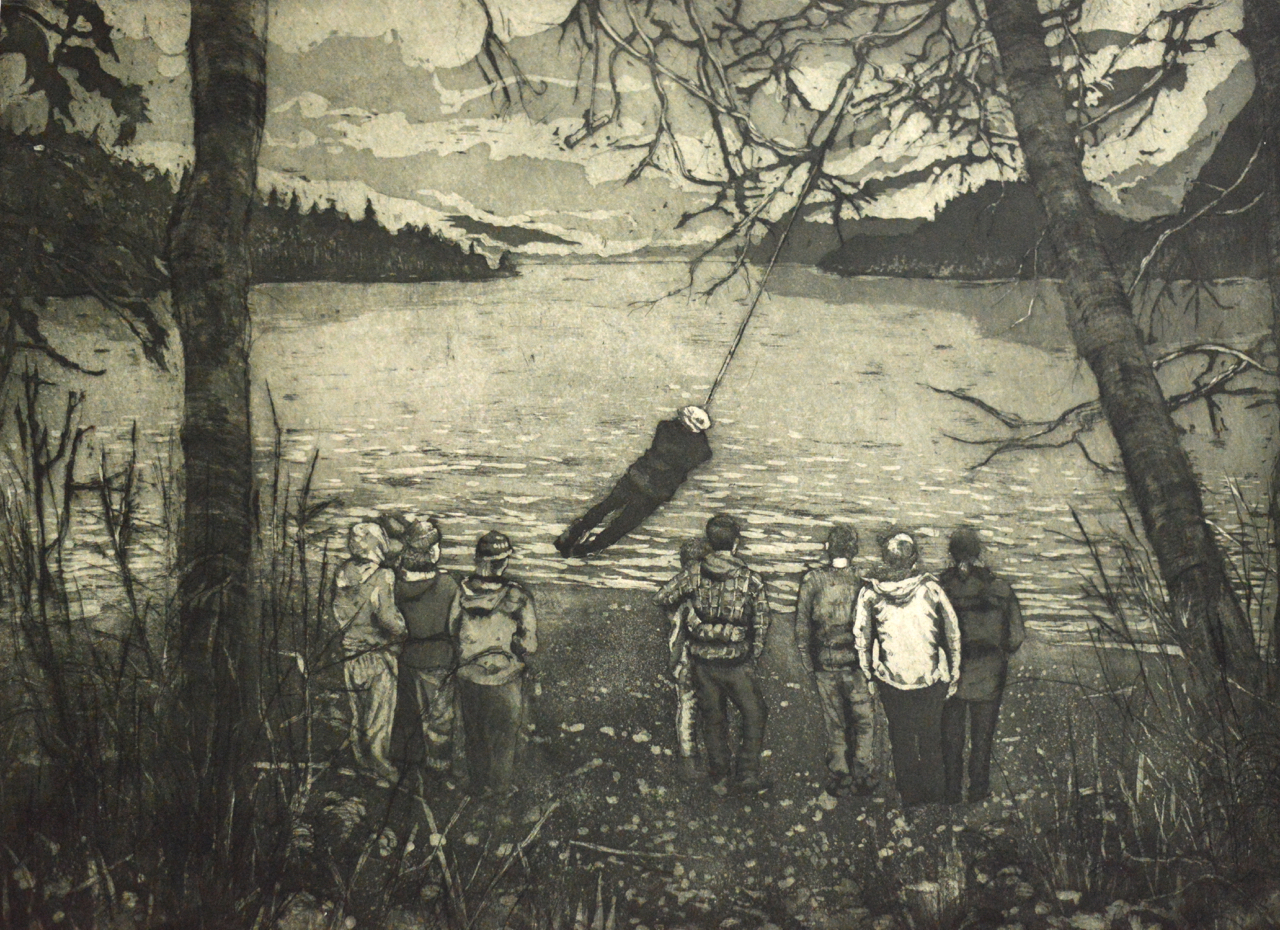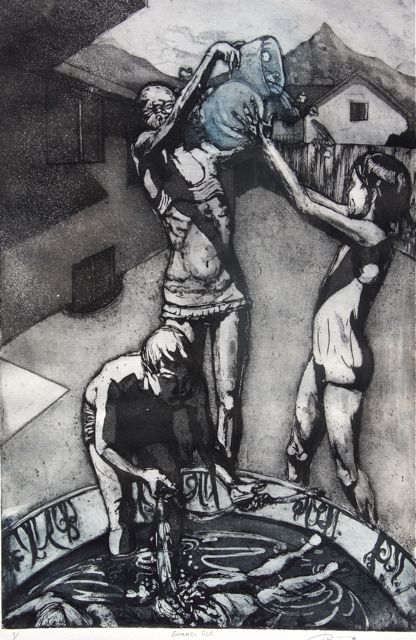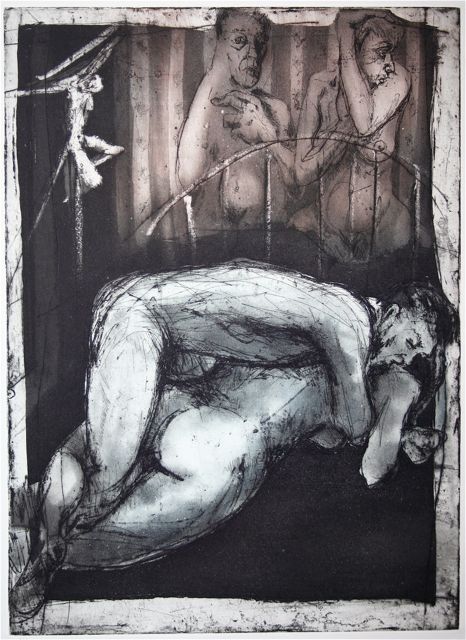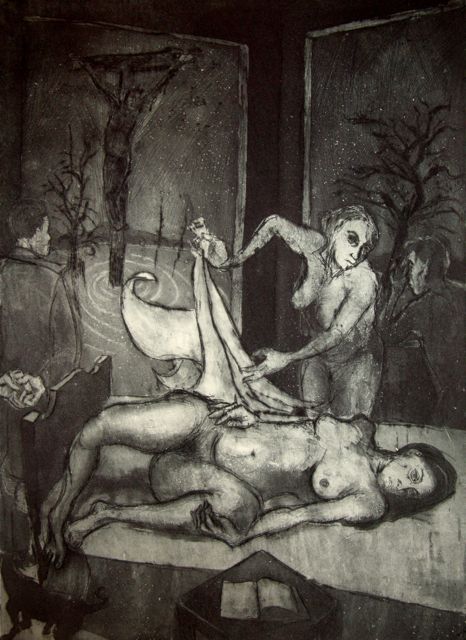–
I am interested in printmaking as story telling. The works on this link can be further subdivided in tall and landscape works as both have been primary formats for these pieces. Much of the works were informed from short stories particularly the writing, at the time, of Raymond Carver and J.L. Borges. A sympathy exists between the short story and the print, the brevity and the compression necessary for both creates an immediacy absent in both large paintings or novels. the stories of J.L. Borges and Raymond Carver I found to be particularly inspirational as I first embarked on these pictures.
In the first three etchings the idea came to me as part of my daily movement. Scenarios and possibilities suggested themselves and led me to take photographs and develop drawings that expanded the ideas and built a visual vocabulary with which I could draw on.
–
–

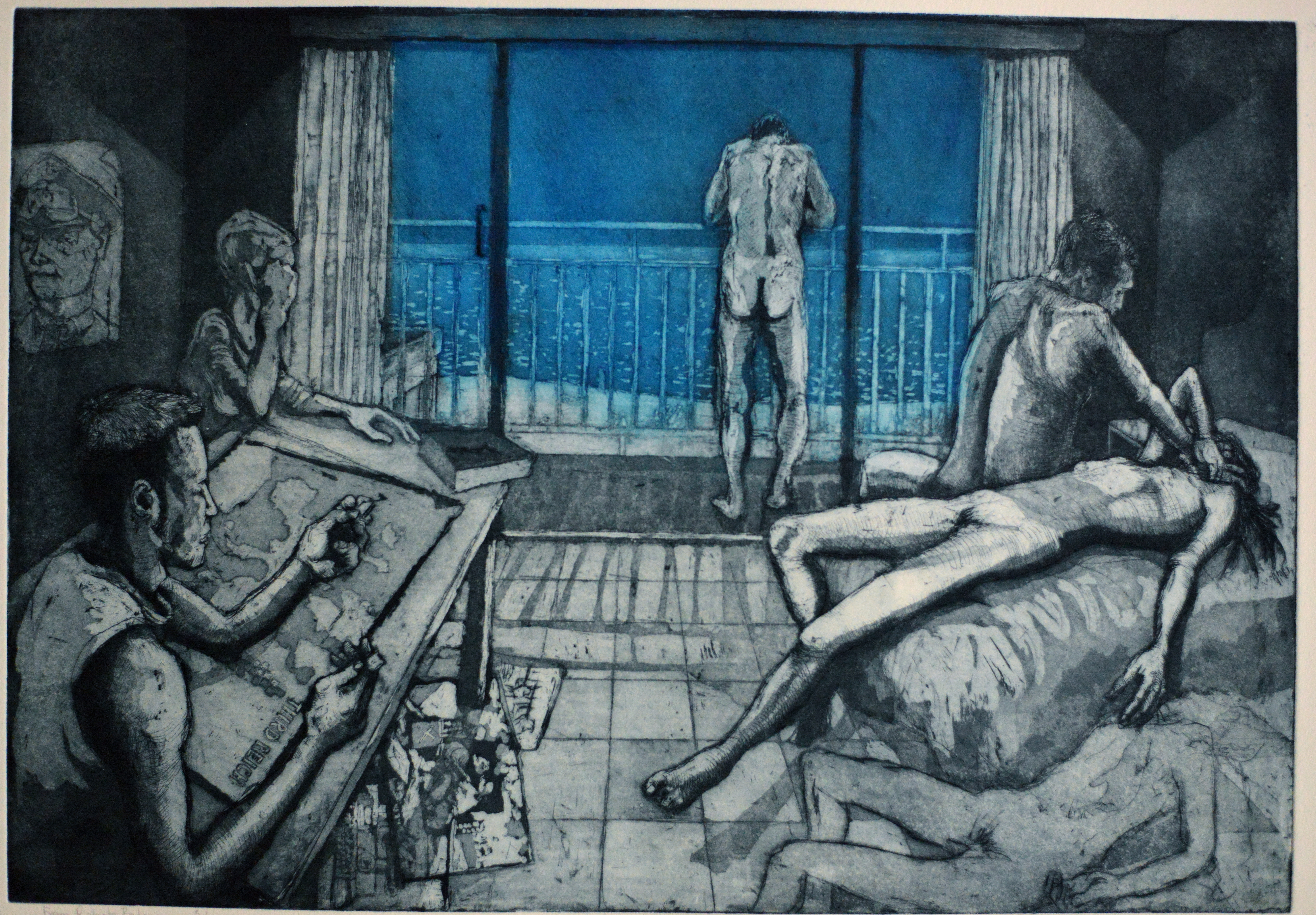 In “Lot”and “Parenthood” the ideas for the pieces emerged from literature. I completed both pictures at about the same time, interestingly the imagery was the similar even though the external meaning of the works very different. This is what makes the narrative form so compelling, it exists as a constructed entity, yet much of its power resides at a sub-conscious level, and the intersection of these layers gives the stories power. I completed these works at about the same time I was working on another piece that used a quote by Walter Benjamin, who was the last centuries greatest exponent and oracle for the moral weight of the story in the face of ever increasing information (and today data). Also in this section is the print “Third Reich” which I wanted to connect with “Lott” as both pieces for me are derived from my time in Berlin. Again Third Reich was arrived at after learning that the Schaubuhne was producing a play from 2666 a novel from Roberto Bolano. This triggered a composition drew later that night which uses his book to develop and overlap with concerns from my own work.
In “Lot”and “Parenthood” the ideas for the pieces emerged from literature. I completed both pictures at about the same time, interestingly the imagery was the similar even though the external meaning of the works very different. This is what makes the narrative form so compelling, it exists as a constructed entity, yet much of its power resides at a sub-conscious level, and the intersection of these layers gives the stories power. I completed these works at about the same time I was working on another piece that used a quote by Walter Benjamin, who was the last centuries greatest exponent and oracle for the moral weight of the story in the face of ever increasing information (and today data). Also in this section is the print “Third Reich” which I wanted to connect with “Lott” as both pieces for me are derived from my time in Berlin. Again Third Reich was arrived at after learning that the Schaubuhne was producing a play from 2666 a novel from Roberto Bolano. This triggered a composition drew later that night which uses his book to develop and overlap with concerns from my own work.
–
Art rooted within the realm humanity, enables a meaningful aesthetic and story telling is the vehicle of towards are a relatable art. The narrative form opens literary possibilities of analogy and metaphor, it builds a frame for the political, and it becomes personal exploring expressions of the psyche and emotions. However the story in art, as Walter Benjamin laments, is increasingly becoming “remote”.
In a meditation on fiction Ken Lerner book re-commits to the novel because in-it lies “more interesting possibilities than determinism”. We are increasingly seeing people defined by their skin-colour, sexuality, age, gender, class, and privilege, the story allows us to see the possibilities and choices beyond these classifications stories explore what takes place when people collide. Returning to Benjamin he says: “it takes the representation of human life to its extremes … gives evidence to the profound complexity of living”. Continuing Lerner echoes Benjamin when he says “By integrating the social process with the development of the person (stories) bestows the the most fragile justification on the order determining it …it is this inadequacy that is realized”
–
–
––
–
–
–
–
–
–
–
“London Allegory” 12 x 18” etching
“Heroin on Rathbone Pace” 12 x 18” etching
“Prostitute” 12 x 18” etching“In a Coffee Shop” 12 x 18” etching
“Third Reich” 12 x 18″ etching
“Lot in Berlin” 12 x 18” etching
“Parenthood” 12 x 18” etching
“9/11” 12 x 18” etching
“Weighing” 12 x18” etching
“Rope” 18 x 36″ etching
“If I could play…” 12 x 16″ etching
“Wading Pool” 12 x 16″ etching
“Grapes of Wrath” 12 x 16″ etching
“Bird man and an Angel” 12 x 16″ etching
“Sex” 12 x 16″ etching
“Gospel According to John (from JL Borges short story) 12 x 16” etching


